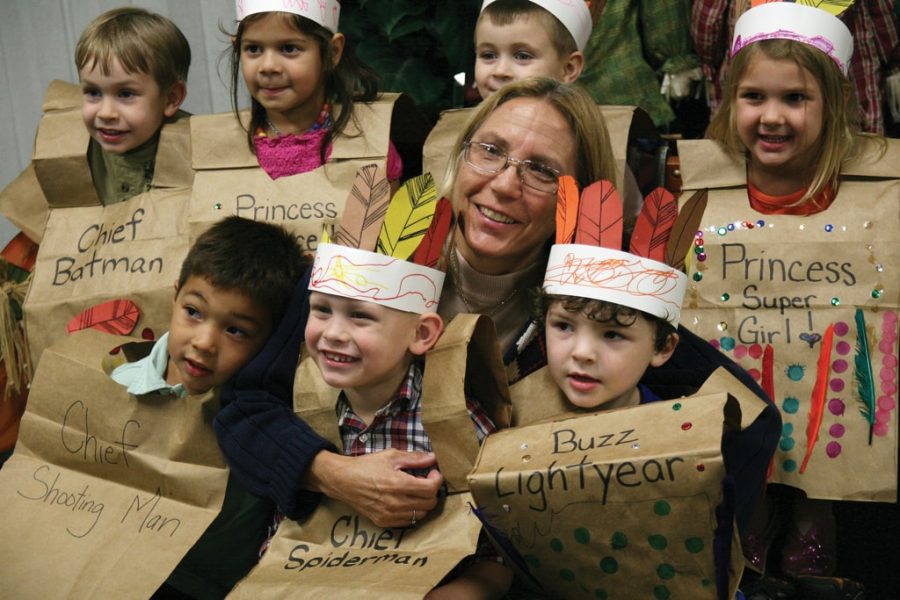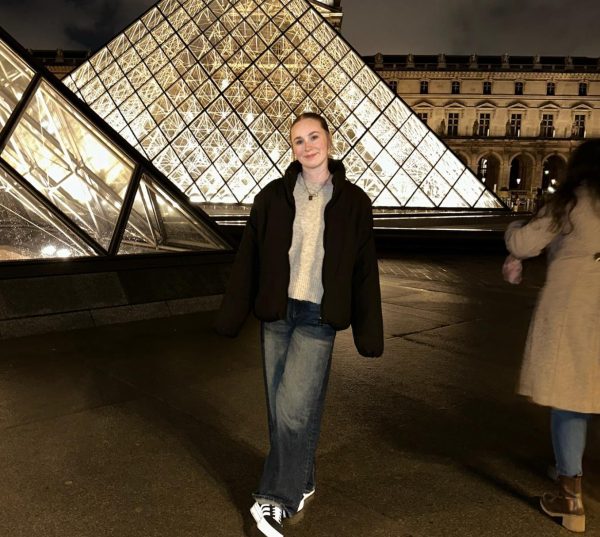Warning! Indigenous people at risk
According to plantcityobserver.com, “The children and staff of the First Baptist Learning and Preschool Center celebrated Thanksgiving Nov. 15, with an early holiday meal. Dressed in American Indian and pilgrim costumes, the students filed into the fellowship hall to enjoy their feast.”
October 29, 2020
Can you remember your preschool days? Innocent, sweet, whiffs of play-doh and syrup always lingering in the air. Coloring outside of the lines in coloring books and creating one of a kind scribble art you’d proudly present to your parents. Running as fast as you could in light up, velcro, twinkle toes and playing house. Holidays at preschool were easily the most exciting. Christmas had been pageants, candy cane swords, sugar cookie decorating, ornament making and playing in the snow, but Thanksgiving was something else. Of course, hand turkeys and all kinds of fall and Thanksgiving-themed arts and crafts, shared recipes and sharing what us little 3 and 4-year-old selves were thankful for, but the biggest tradition at Thanksgiving was dress up day. Our teachers would pull out little teepees and toy horses and we even got to wear cut out feather hats and brown grocery bag costumes with sharpied on names like “Chief Elmo” or “Princess Penguin,” and as we’d play “Indians,” we would share our Thanksgiving meal.
It wasn’t until years later that I came to realize how utterly wrong and appropriating that was to actual Native Americans. Back then, my friends and I never thought anything of it; clearly none of our parents had questioned it, and some of us would grow up and continue dressing up as Native American boys and girls for most notably Halloween costumes, aesthetics or parties. I don’t believe my childhood preschool had some kind of malicious intent and secretly knew that dressing up 30 predominantly white preschool kids as Native Americans was culturally appropriating them or offensive, but that’s the issue. If you’re not understanding that what you’re doing is wrong, you won’t have any doubt about doing it again or encouraging others to do the same.
Not only is it seen as a mock to Native Americans, but on top of that, we were doing so without getting educated on their culture or who they really are. All we knew was the same as what most other Americans (our parents and teachers) knew: war paint, hunting buffalo, teepees and dances. They aren’t being seen as modern day people. It reflects how Native Americans are seen to non-natives and the style most often portrayed is rooted from a time of violence in the 19th century when white settlers moved west and displaced the indigenous people that lived there. Their image has been entirely frozen in a time that glorified the white “explorers” and was riddled with sickness, famine and rape and isn’t representative of who Native Americans really are. We need to be learning about who they are as historic people and as modern day people.
Sexualization of the culture is another commonality putting many women of the culture at great risk. When a non-native woman dresses up in a “Sexy Native” outfit it contributes to the same harmful stereotypes that feed into sexual violence and human trafficking towards indigenous woman and girls. In 2016, Lingerie company ‘Yandy’ proceeded to make over $150,000 in profit revenue from “Sexy Native American” costume sales despite the 24,515 petitioned signatures on the Jeff Watton: Stop Yandy From Using Our Culture As A Costume petition on change.org.
Cultural appropriation can be avoided. We can have an honest admiration for a culture, by actively educating ourselves about it and purchasing items from those inside the culture. Buying culture “inspired” outfits and products stolen by name-brand retailers only adds to the harmful appropriating. Don’t assume it’s okay to borrow parts of other cultures as some of them have certain traditions and ceremonies specific to who can perform them. Retailers doing so fuels the damaging practice of borrowing what’s not theirs. Encourage schools to approach Thanksgiving as an opportunity to teach kids what the history of Thanksgiving was really like and not use it as an excuse to culturally appropriate their customs and cultures in “light-fun.” Have meaningful conversations with younger generations (especially before holidays like Halloween) on why other people’s struggles and sacred traditions shouldn’t be used for dress-up. Little kids are the most impressionable, don’t let them grow up thinking what’s wrong is right.
Through accepting and understanding what’s wrong with cultural appropriation and how it’s used, together we can learn and move forward to better approach the future.










Renee Gau • Oct 29, 2020 at 8:33 pm
Spot on! Thank you for bringing this forward. Let’s turn the corner!